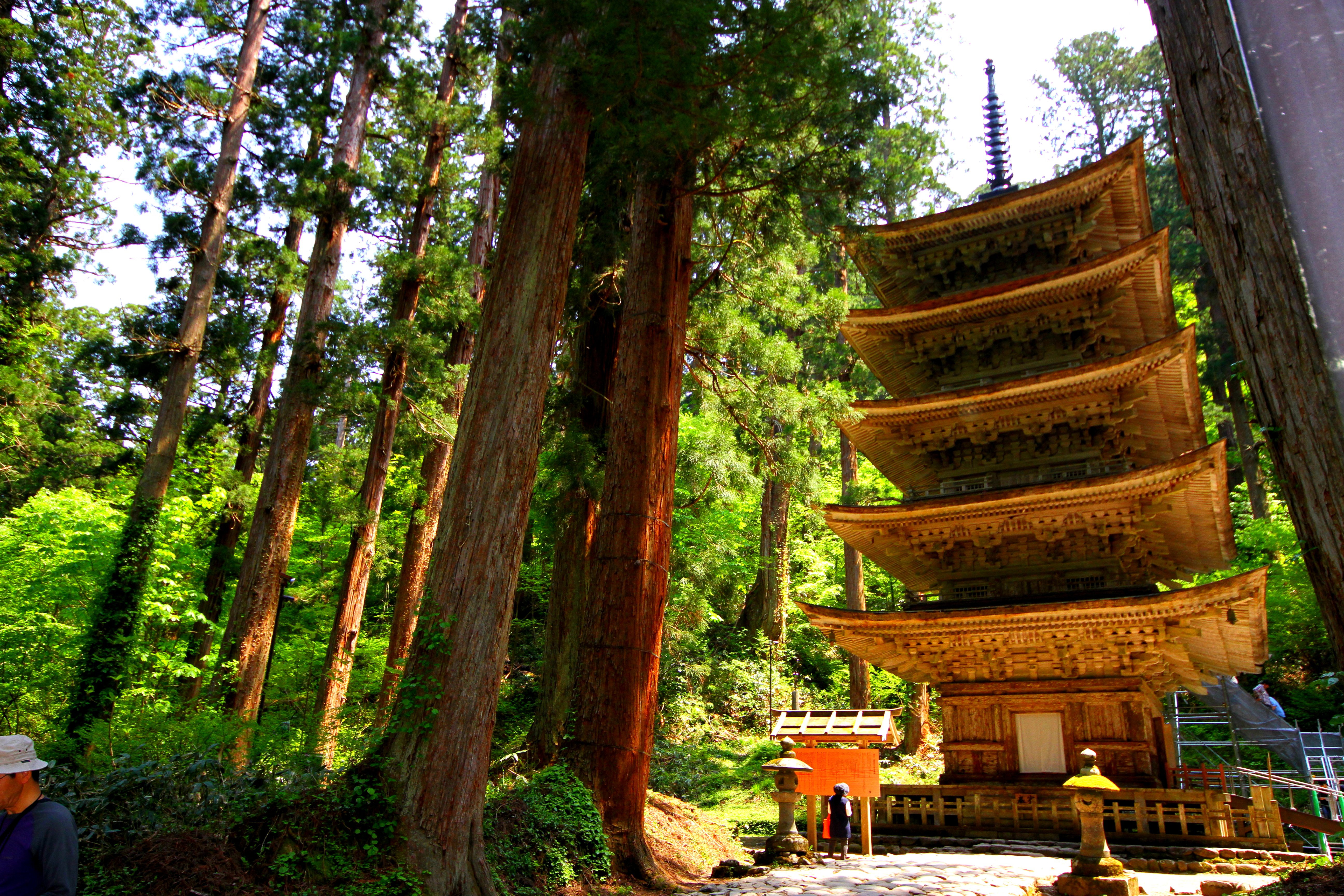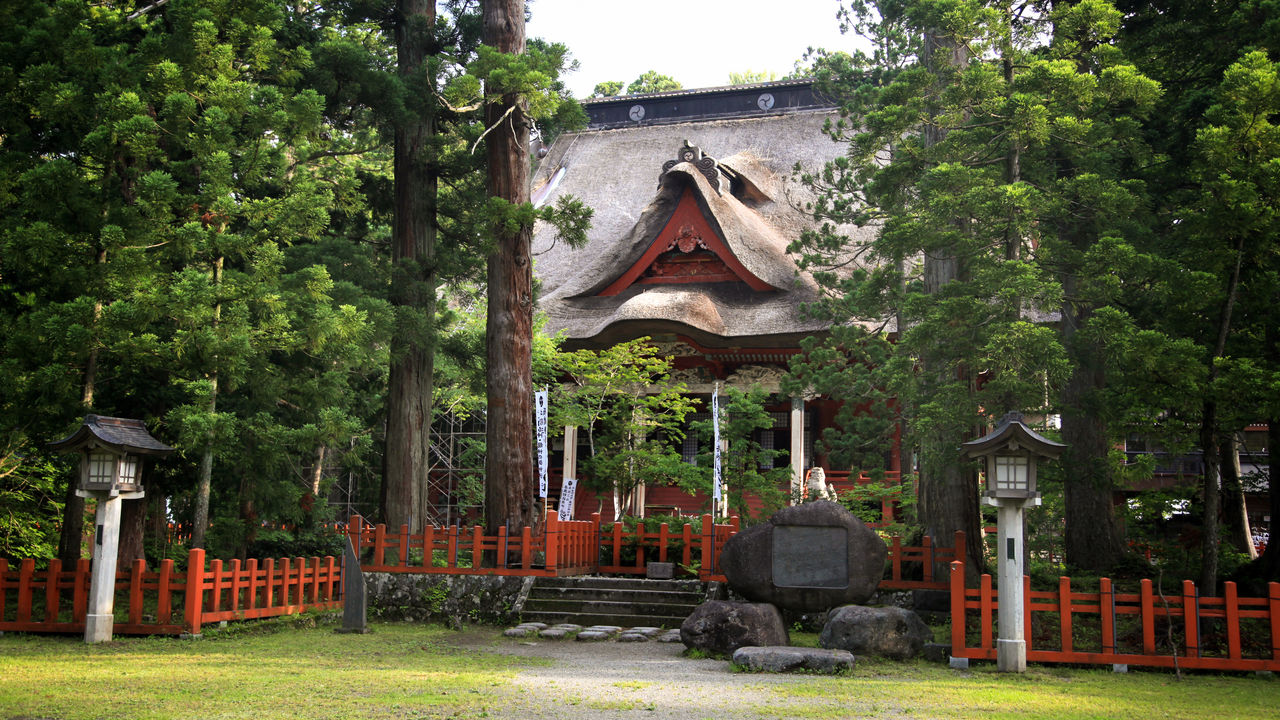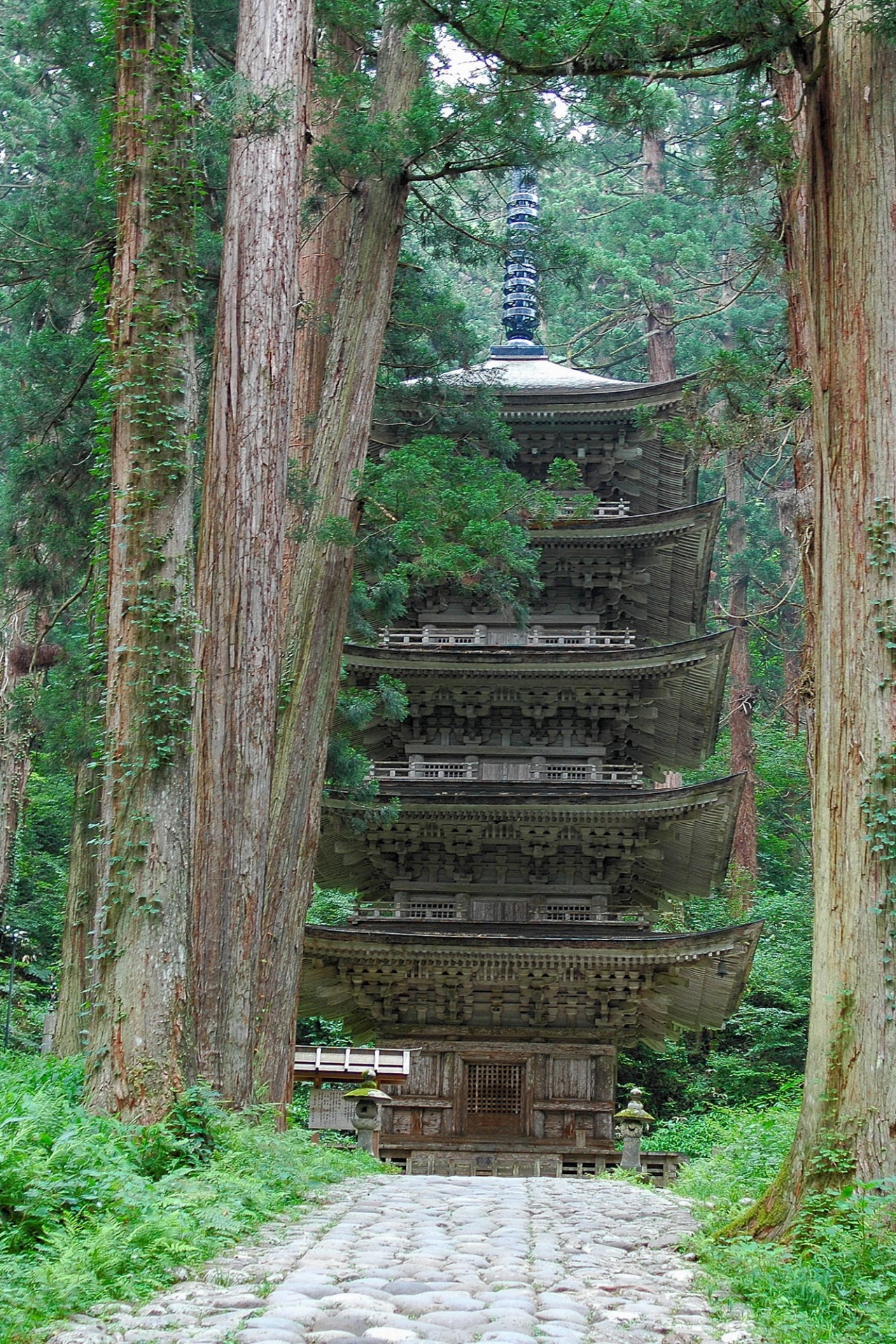


Dewa Sanzan Shrine
A sacred journey of birth, death, and rebirth across three holy mountains.
A center of Shugendo mountain asceticism in Yamagata, the Dewa Sanzan are three sacred mountains, each with a shrine representing a different aspect of life and the afterlife.
History of the Shrine
The Dewa Sanzan (Three Mountains of Dewa) have been a sacred site for over 1,400 years. Their religious tradition was founded in the 6th century by Prince Hachiko, the son of Emperor Sushun. According to legend, he was guided to the mountains by a three-legged crow, a sacred messenger. Here, he underwent harsh ascetic training and began worshipping the three mountains as manifestations of Buddhist deities, establishing a center for Shugendo.
Shugendo is a unique, syncretic Japanese faith that combines elements of ancient Shinto mountain worship, Buddhism, and Taoism. Its practitioners, known as 'yamabushi' (mountain priests), retreat to the mountains to engage in rigorous physical and spiritual training to attain enlightenment. The pilgrimage across the three mountains of Dewa Sanzan is a symbolic journey of transformation, moving through the past, present, and future.
The Enshrined Kami
The three mountains are worshipped as 'gongen', or kami who are manifestations of Buddhist deities. This syncretic belief is at the heart of Shugendo.
- Mt. Haguro's kami is identified with Kannon Bodhisattva, the deity of mercy, representing salvation in the present world.
- Mt. Gassan's kami is identified with Amida Buddha, the lord of the Pure Land paradise, representing the world of the past and the dead.
- Mt. Yudono's kami is identified with Dainichi Nyorai, the central cosmic Buddha, representing the potential for future enlightenment and rebirth.
Together, they form a powerful trinity that guides the practitioner through a symbolic journey of spiritual transformation.
What to See
The pilgrimage traditionally follows a specific order:
- Mt. Haguro (414m): Represents the present and worldly desires. Its shrine is the most accessible. The approach involves a famous climb up 2,446 stone steps through a forest of ancient cedars. At the base is a stunning five-storied pagoda, a National Treasure, which seems to rise organically from the forest floor.
- Mt. Gassan (1984m): Represents the past and the afterlife (like the moon). Its shrine is only open in the summer due to heavy snow. The journey here is a challenging hike across alpine meadows.
- Mt. Yudono (1500m): Represents the future and rebirth. This is the most sacred and secret of the three. Photography is strictly forbidden at its inner sanctuary, where a massive, reddish-orange rock with hot mineral water flowing over it is worshipped as the 'goshintai'. Visitors purify themselves here in a powerful ritual of symbolic rebirth.
Major Festivals
The 'Shoreisai' festival at Mt. Haguro, held during New Year's Eve, is a major fire festival where two massive 'tsutsugamushi' (symbolic insects made of straw) are set ablaze in a ritual to pray for a good harvest and the subjugation of evil. The 'Hassaku-sai' at Mt. Haguro in late August is the main autumn festival, giving thanks for the harvest. Many yamabushi can be seen during the summer and autumn months, recognizable by their white robes and the sound of their conch shell trumpets echoing through the mountains.
Support Dewa Sanzan Shrine
Your participation helps preserve this sacred site for future generations. Every digital offering contributes to real shrine preservation efforts across Japan.
By making an offering, you become part of a global community honoring Japanese spiritual traditions and supporting the cultural heritage that has been cherished for centuries.